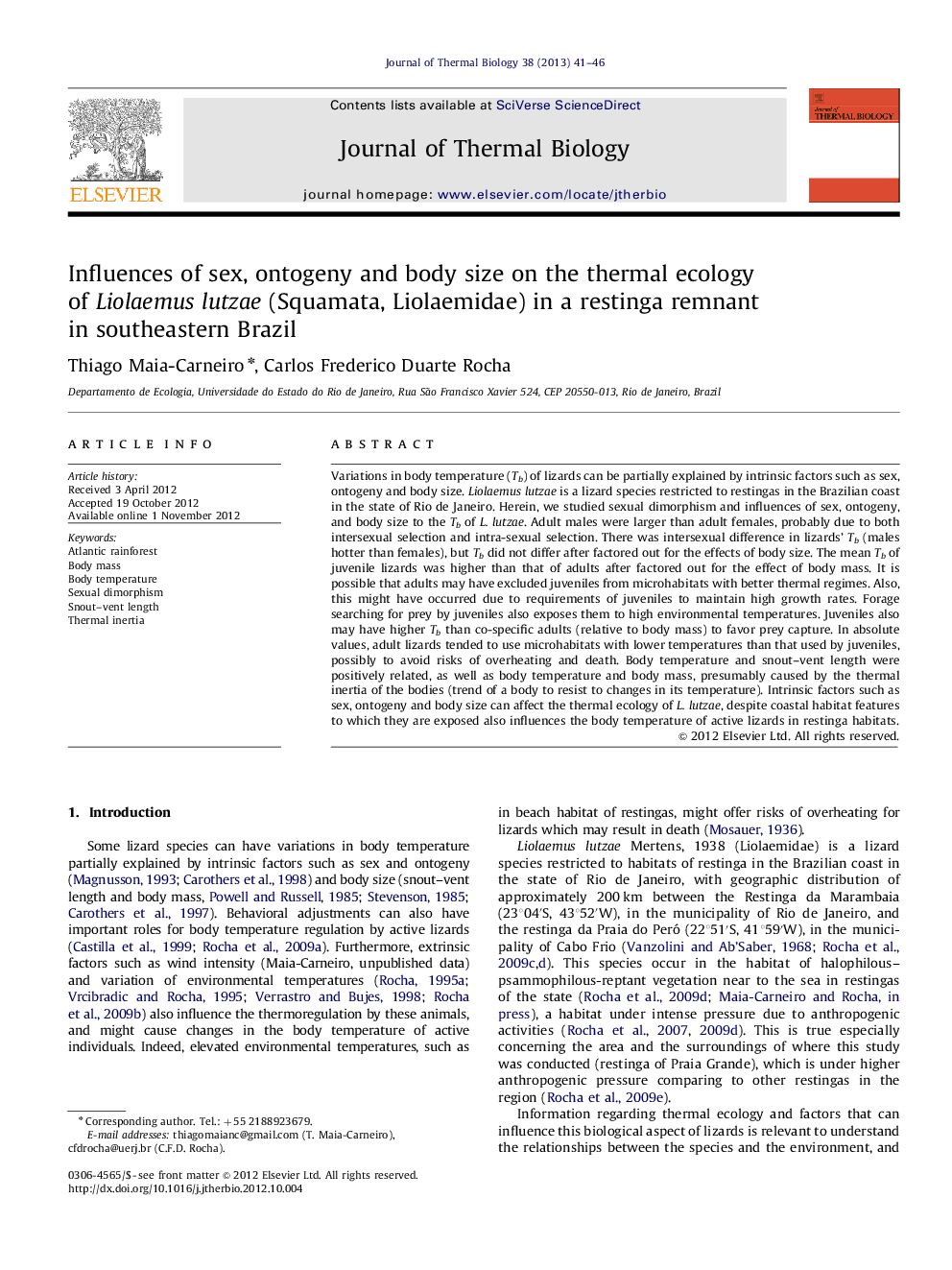| کد مقاله | کد نشریه | سال انتشار | مقاله انگلیسی | نسخه تمام متن |
|---|---|---|---|---|
| 2843054 | 1166069 | 2013 | 6 صفحه PDF | دانلود رایگان |

Variations in body temperature (Tb) of lizards can be partially explained by intrinsic factors such as sex, ontogeny and body size. Liolaemus lutzae is a lizard species restricted to restingas in the Brazilian coast in the state of Rio de Janeiro. Herein, we studied sexual dimorphism and influences of sex, ontogeny, and body size to the Tb of L. lutzae. Adult males were larger than adult females, probably due to both intersexual selection and intra-sexual selection. There was intersexual difference in lizards' Tb (males hotter than females), but Tb did not differ after factored out for the effects of body size. The mean Tb of juvenile lizards was higher than that of adults after factored out for the effect of body mass. It is possible that adults may have excluded juveniles from microhabitats with better thermal regimes. Also, this might have occurred due to requirements of juveniles to maintain high growth rates. Forage searching for prey by juveniles also exposes them to high environmental temperatures. Juveniles also may have higher Tb than co-specific adults (relative to body mass) to favor prey capture. In absolute values, adult lizards tended to use microhabitats with lower temperatures than that used by juveniles, possibly to avoid risks of overheating and death. Body temperature and snout–vent length were positively related, as well as body temperature and body mass, presumably caused by the thermal inertia of the bodies (trend of a body to resist to changes in its temperature). Intrinsic factors such as sex, ontogeny and body size can affect the thermal ecology of L. lutzae, despite coastal habitat features to which they are exposed also influences the body temperature of active lizards in restinga habitats.
► We investigated sexual dimorphism in the lizard Liolaemus lutzae.
► Body size affected the body temperature of L. lutzae between sexes.
► Body temperature of L. lutzae changed ontogenetically.
► Snout–vent length and body mass affected the body temperature of L. lutzae.
Journal: Journal of Thermal Biology - Volume 38, Issue 1, January 2013, Pages 41–46